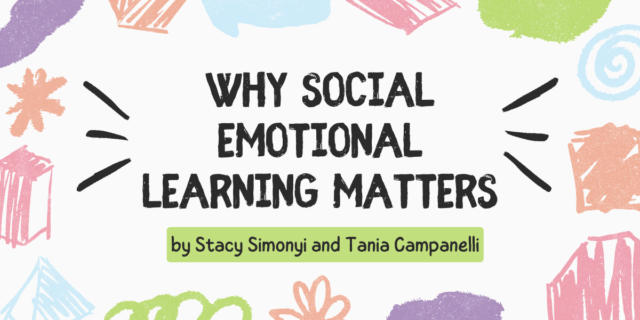
Exploring of successful collaborations from the world beyond school reveal groups of people thinking and talking together in purposeful ways. They are not talking at each other, talking to rehearse or plan for the known, or talking to answer the kinds of questions that have right answers. Their talk has a purpose—and that purpose is to tackle the unknown—to strategize, to innovate, to problem-solve, to construct understanding. This use of talk “in the wild” frames the “why” behind purposeful talk in the classroom—our rationale for designing teaching and learning that’s dialogic in nature.
Exploring of successful collaborations from the world beyond school reveal groups of people thinking and talking together in purposeful ways. They are not talking at each other, talking to rehearse or plan for the known, or talking to answer the kinds of questions that have right answers. Their talk has a purpose—and that purpose is to tackle the unknown—to strategize, to innovate, to problem-solve, to construct understanding. This use of talk “in the wild” frames the “why” behind purposeful talk in the classroom—our rationale for designing teaching and learning that’s dialogic in nature.
In the explorations of talk above, three characteristics emerge. These three characteristics lead us to a definition of purposeful talk. Talk is purposeful when it...
- honors constructive intent. Purposeful talk engages participants
in a deliberate process of building on a range of thinking
to construct unique ideas, strategize, and innovate. Participants
recognize their ability to draw from what Peter Senge describes
as “a ‘larger pool of meaning’, accessible only to a group” (1990,
248), and believe deeply in the value of doing so. - harnesses the power of varied perspectives. Purposeful talk
deliberately harnesses a range of perspectives to broaden and
deepen the thinking and constructive potential. Participants value
the differing perspectives, actively seek them out, and work to
fully understand each voice. - engages participants over expanded time and space. Purposeful
talk honors the time participants need to deepen and evolve
understanding. Participants recognize that the process of constructing
doesn’t necessarily happen in simple, quick conversations.
They’re willing to dwell in shades of gray as they wrestle
with varied perspectives, contemplate possibilities, and gather
new thinking. They recognize that compelling ideas
may linger and evolve over time, and are willing to
cycle back to rethink and revise or expand previous
understandings.
…
Learn more and pre-order Building Bigger Ideas at Heinemann.com
 Follow us on Instagram @heinemannpub to stay up to date on the latest books, your favorite authors, and upcoming events!
Follow us on Instagram @heinemannpub to stay up to date on the latest books, your favorite authors, and upcoming events!
 Maria Nichols is a literacy consultant and Director of School Innovation for the San Diego Unified School District. A former elementary classroom teacher, Nichols received the Distinguished Elementary Educator Award from the San Diego chapter of Phi Delta Kappa, 2002.
Maria Nichols is a literacy consultant and Director of School Innovation for the San Diego Unified School District. A former elementary classroom teacher, Nichols received the Distinguished Elementary Educator Award from the San Diego chapter of Phi Delta Kappa, 2002.
Maria is the author of Comprehension Through Conversation and Building Bigger Ideas.
You can follow Maria on Twitter @marianichols45




